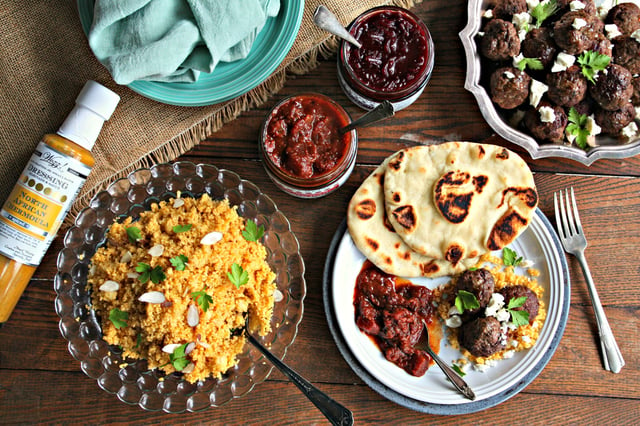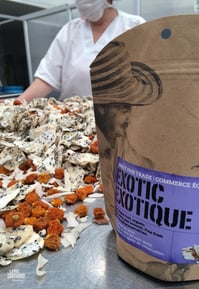
From the first whiff of its aromatic scent to the initial savory bite, meals have always had the ability to be a complete sensory experience.
When our taste buds are delighted by a delicious course, we remember it, share our experience with others, and relive the joy of that tasty treat while describing it and making plans to order and enjoy it again. No matter the individual lifestyle, today’s consumer wants to get the most bang for their buck when it comes to the food they eat, and there has been an increased focus on specialty products made with fresh, high-quality ingredients that are inventive, thoughtful, and delicious.
Specialty foods, while considered to have numerous benefits over standard, staple foods, generally come with higher costs due to their expensive ingredients and intricate cooking processes. Brands selling these high-end items have to do their part to convince shoppers that their goods are worth the extra dollars, which is why your specialty food marketing strategy must be planned thoroughly and executed flawlessly.
Traditionally, delicacies like caviar, artisan cheese, foie gras, and truffles have been considered specialty foods, but now we’re seeing products like gourmet pet food, vegan meet and cheese alternatives, organic candies, sauces, and pickled veggies falling into the specialty category. Customers of these creative items are progressive and more likely to follow food trends. They have a desire for variety, and as a result, brands have responded by using their creative food items as part of their promotional activities.
Entrepreneur recently consulted several brand leaders and asked for their expert tips on successful specialty food marketing strategies and the ins and outs of operating a small gourmet product company. Below are five key takeaways we selected after reviewing their tried-and-true business lessons.
1. Replace artificial additives with natural ingredients
Manufacturers of classic food items like breakfast cereal and sweet candies have made strides to replace long, hard-to-pronounce ingredients lists with descriptions of flavors and colorings that come from more earthly goods. Fruit and vegetable juices are quickly replacing dyes and chemicals, and consumers are taking note. Specialty food that boasts minimalist, concise ingredient and nutritional information appeals to today’s health-conscious consumer. People will generally be willing to pay more for a high-quality item that has been prepared skillfully and mindfully, focusing on the wellbeing of the end user. Natural ingredients can be used in highly creative ways, and gourmet brands that go the extra mile to include organic, clean-label products into the production of their specialty foods will make major strides with the modern foodie.
2. Encourage brand advocates to spread the word
Innovative food companies often attend trade shows to immerse passersby in the complete experience of enjoying their products. These are prime opportunities to begin spreading the word about your brand and giving a whole new audience the chance to learn about and sample your product. If you’re investing the time and money into renting a booth and giving your product away, you should also be encouraging people to share your product with others. We all know word-of-mouth promotion will never go away, whether it’s in person or via social media, and this should play a starring role in your specialty food marketing strategy. Loyalty programs, discounts, and incentives given out upon a customer’s first order can be highly effective in inspiring them to share positive feedback about your company and products to others. The key is getting people to try the product first — from there, loyalty and repeat customers can blossom.
3. Determine what your target market (and demographic) is
Specialty food brands, especially those introducing a completely unique product out on the market, need to find out where their audience is and where their conversations are taking place. Whether it’s a café, a social networking site like Pinterest, a winery, or some other distinct location, brands need to make an appearance at these places and join in on the conversation. Proving you’re an expert in your particular industry and convincing others to try your product starts with promoting two-way conversations with potential customers, rather than just trying to sell them your specialty item.
4. Don’t overlook the finer details
Brands selling more expensive, high-end products need to remember to put the “specialty” in specialty food throughout each phase of production. From your product’s shape and color to its packaging, careful attention must be placed on all components that are used to show off your food to others. Your company name, product description, informational text, website, and facilities should all be regularly audited to ensure they are meeting the highest possible standards of quality. Giving yourself the leeway to change and evolve is crucial, especially for small businesses. Communicating new improvements can be achieved through the various channels involved in specialty food marketing, including your product’s labels, its social media pages, its salespeople, and any other advertisements your business chooses to invest in.
5. Prioritize your packaging and labels
We in the flexible packaging world often stress the importance of handling your packaging needs very early on in the process of creating your product. You could have the most delicious, awe-inspiring food product out on the market, but if its exceptional qualities are not easily, quickly, and creatively communicated upon initial glance, you will miss out on grabbing the attention of potential loyal brand advocates and repeat customers. Considering your community and finding out what appeals to shoppers in your region, as opposed to designing your product and packaging around what appeals to you, can result in major wins time and time again.

One profound tip that stood out to us is using your product’s packaging to evoke how special and unique your specialty food product is to very targeted audiences and niches.
For example, if you sell your goods or open a storefront in a tourist-rich area, people will want to buy items they can bring home as souvenirs. They seek out goods with some kind of text or symbol that is representative of the area the purchased it from. Likewise, many health-conscious consumers actively seek out locally produced items because they can count on the ingredients being fresh and harvested close to home. There is a special connection brands have the opportunity to foster, simply by choosing packaging that is bold, protective, and provides plenty of retail space to highlight the many characteristics that make their forward-thinking food products different from the rest.
Packaging has long been an important and effective way to market a wide variety of consumer packaged goods since it is the first thing people see when coming in contact with a particular product. When selling carefully produced specialty foods, brands should choose packaging that is of the same high quality as the goods they sell and represents the modern, creative, and skillful design aspects their brand works day and night to communicate to customers. Protective packaging works to protect the integrity, shape, color, texture, flavor, and aroma of specialty food while providing ample space for your brand to showcase its distinct graphics, informational text, and memorable logos that, together, help attract new customers and help them spread the word about your unique brand.
(Image Sources: Wozz Kitchen Creations, Level Ground Trading)
Related Posts:
Specialty Food Marketing And Stand Up Bags
Food Marketing Strategy for Consumer Products
26 Winter Fancy Food Show Brands to Watch
Will Your Product Packaging Survive the Food Revolution?






